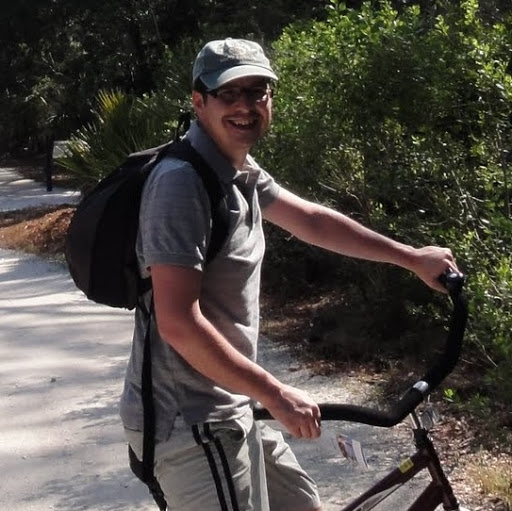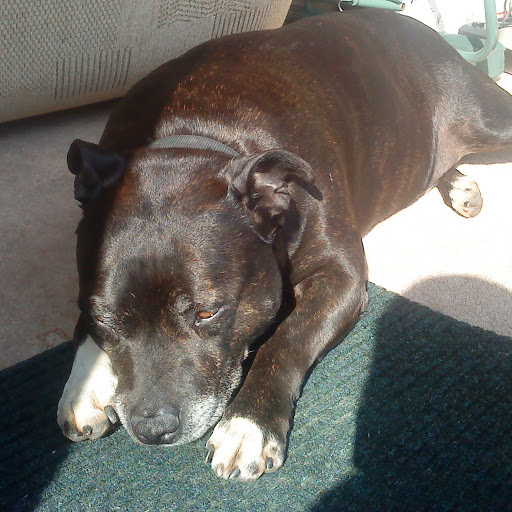Paul Edward Higham
age ~49
from Staten Island, NY
- Also known as:
-
- Paul E Higham
- Paul E Highman
- Paul Highham
- Zdzislaw Prepiora
Paul Higham Phones & Addresses
- Staten Island, NY
- 51 Oliver Ave, Edison, NJ 08820 • 7323186711
- Jersey City, NJ
- Hoboken, NJ
- New York, NY
- Leesburg, FL
Specialities
Children's Court • Civil Liberties • Criminal Law/Intervention/Compensation • Human Rights • Licensing and Disciplinary Tribunals • Mental Health • Occupational Health and Safety • Criminal Law (Appellate)
Us Patents
-
Apparatus For Mixing A Liquid And Dry Powdered Components
view source -
US Patent:6494611, Dec 17, 2002
-
Filed:Jan 26, 2001
-
Appl. No.:09/770982
-
Inventors:Brian Edwards - West Milford NJ
Paul Higham - Ringwood NJ
Joseph Zitelli - River Edge NJ -
Assignee:Howmedica Osteonics Corp. - Allendale NJ
-
International Classification:B01F 1100
-
US Classification:366209, 366216, 366218
-
Abstract:An apparatus for mixing dry and liquid components is used to form a setting paste. A holder is mounted on the apparatus for reciprocating movement with respect to a base of the apparatus. The movement has an amplitude with components in first and second perpendicular directions. A drive system is operatively connected to the holder for imparting said reciprocating movement to said holder at a predetermined number of cycles per minute. A container having a mass of said dry and liquid components therein is mounted in the holder. The mass, amplitude and cycles per minute of reciprocation being chosen to produce an energy input of at least about 3Ã10 Joules per second per 3 cc of mixture.
-
Porous Calcium Phosphate Cement
view source -
US Patent:6547866, Apr 15, 2003
-
Filed:Oct 30, 2000
-
Appl. No.:09/699662
-
Inventors:Brian Edwards - West Milford NJ
Paul Higham - Ringwood NJ
Joseph Zitelli - River Edge NJ -
Assignee:Howmedica Osteonics Corp. - Allendale NJ
-
International Classification:A61L 2402
-
US Classification:106 35, 106646, 501 84, 523116, 623 2362
-
Abstract:A kit and a method for making a porous cement which self sets to hydroxyapatite and has an interconnected porosity is produced by mixing a calcium source and a phosphate source with a carbonate source and mixing this powdered component with a liquid component having an acid component. The liquid component comprises water or an aqueous solution containing an acid. The acid and the carbonate react to form carbon dioxide thereby producing an interconnected porosity in the normally solid self-hardening bone cement. The method requires only a relatively low weight percent of the acid and base to be mixed with the liquid and powder cement components.
-
Calcium Phosphate Composition And Method Of Preparing Same
view source -
US Patent:6558709, May 6, 2003
-
Filed:Jan 5, 2001
-
Appl. No.:09/754882
-
Inventors:Paul Higham - Ringwood NJ
-
Assignee:Howmedica Osteonics Corp. - Allendale NJ
-
International Classification:A61K 3342
-
US Classification:424602, 106690, 106691, 423299, 423304, 423305, 423306, 424490, 424493, 424494, 424495, 424601, 424606, 514769, 514772, 514781, 514951, 514952
-
Abstract:A method for controlling the formation of a hydroxyapatite bone filler from dry calcium phosphate precursors in an aqueous solution uses coated sodium phosphate powder. The sodium phosphate powder is coated with a water soluble cellulose. Until the cellulose dissolves in the aqueous solution setting of the calcium phosphate cements proceeds slowly but when the exposed sodium phosphate particles start to solubilize in the aqueous solution the setting rate increases.
-
Cement Mixing And Dispensing Device
view source -
US Patent:6592251, Jul 15, 2003
-
Filed:Jan 26, 2001
-
Appl. No.:09/771317
-
Inventors:Brian Edwards - West Milford NJ
Paul Higham - Ringwood NJ
Joseph Zitelli - River Edge NJ -
Assignee:Howmedica Osteonics Corp. - Allendale NJ
-
International Classification:B01F 506
-
US Classification:366268, 336130, 336332, 336334
-
Abstract:An apparatus and method for mixing a liquid component and a powdered component to form a bone filler has first and second syringes each having a barrel, a plunger and an exit port. The plunger is moveable with the barrel of each syringe along a longitudinal axis of the barrel. An end portion of each plunger extends beyond the end of each barrel when the plunger tip is spaced from the exit port and can be activated to move the plunger tip toward the exit port. A mechanism for mixing the liquid and powdered components is operatively connected to each of the barrels and plungers of the first and second syringes so that the relative sliding movement of first and second parts of the mechanism simultaneously moves the plungers and barrels of the first and second syringes relative to one another to move the combined liquid and powdered components back and forth between the first and second syringe.
-
Antibiotic Calcium Phosphate Coating
view source -
US Patent:6596338, Jul 22, 2003
-
Filed:Oct 24, 2001
-
Appl. No.:10/001525
-
Inventors:Christopher Scott - Hackensack NJ
Joseph Zitelli - River Edge NJ
Paul Higham - Ringwood NJ -
Assignee:Howmedica Osteonics Corp. - Allendale NJ
-
International Classification:B05D 100
-
US Classification:427 226, 427 21, 427 227, 427 224, 427 214, 4273722, 427402, 427403
-
Abstract:A process for applying a coating having a therapeutic agent such as an antibiotic to an implant uses the high surface area of a calcium phosphate coated metal implant as a repository for the therapeutic agent. The implant is coated with one or more layers of calcium phosphate minerals such as hydroxyapatite. After the crystalline layer is applied, which is usually done within an aqueous solution, the implant is dried and packaged. Immediately prior to implantation, the implant is removed from the package and the crystalline layer of calcium phosphate is wetted with an aqueous solution containing the therapeutic agent.
-
Porous Calcium Phosphate Cement
view source -
US Patent:6670293, Dec 30, 2003
-
Filed:Sep 9, 2002
-
Appl. No.:10/237499
-
Inventors:Brian Edwards - West Milford NJ
Paul Higham - Ringwood NJ
Joseph Zitelli - River Edge NJ -
Assignee:Howmedica Osteonics Corp. - Allendale NJ
-
International Classification:A61L 2402
-
US Classification:501 84, 501 1, 106 35, 106646, 623 2362
-
Abstract:A kit and a method for making a porous cement which self sets to hydroxyapatite and has an interconnected porosity is produced by mixing a calcium source and a phosphate source with a carbonate source and mixing this powdered component with a liquid component having an acid component. The liquid component comprises water or an aqueous solution containing an acid. The acid and the carbonate react to form carbon dioxide thereby producing an interconnected porosity in the normally solid self-hardening bone cement. The method requires only a relatively low weight percent of the acid and base to be mixed with the liquid and powder cement components.
-
Method Of Making An Ion Treated Hydrogel
view source -
US Patent:6783721, Aug 31, 2004
-
Filed:Oct 30, 2001
-
Appl. No.:10/020389
-
Inventors:Paul Higham - Ringwood NJ
Philip F. Williams - Teaneck NJ
John Lapszynski - Oak Ridge NJ
Chau Ngo - Secaucus NJ -
Assignee:Howmedica Osteonics Corp. - Allendale NJ
-
International Classification:B29C 4500
-
US Classification:2643281, 264 26, 264340, 264343, 524916
-
Abstract:A high strength hydrogel having a constant swelling pressure upon implantation and thereafter is formed by preparing a hydrogel solution and then injecting the solution into a mold and cause to gel. The molded gel is then washed in a saline solution from about one day to twelve weeks, after which the gel is irradiated for sterilization purposes, dehydrated and packaged. The pre-treatment with the use of a physiologic solution results in an implant which exhibits a constant swelling pressure profile after implantation.
-
Antibiotic Calcium Phosphate Coating
view source -
US Patent:6821528, Nov 23, 2004
-
Filed:Jul 1, 2003
-
Appl. No.:10/610730
-
Inventors:Christopher Scott - Hackensack NJ
Joseph Zitelli - River Edge NJ
Paul Higham - Ringwood NJ -
Assignee:Howmedica Osteonics Corp. - Mahwah NJ
-
International Classification:B05D 100
-
US Classification:424423, 424422, 623 236, 427 226, 427 21, 427 227, 427 224, 427 214, 4273722, 427402, 427403
-
Abstract:A process for applying a coating having a therapeutic agent such as an antibiotic or a bone morphogenic protein to an implant uses the high surface area of a calcium phosphate coated metal implant as a repository for the therapeutic agent. The implant is coated with one or more layers of calcium phosphate minerals such as hydroxyapatite. After the crystalline layer is applied, which is usually done within an aqueous solution, the implant is dried and packaged. Immediately prior to implantation, the implant is removed from the package and the crystalline layer of calcium phosphate is wetted with an aqueous solution containing the therapeutic agent.
Wikipedia References

Paul Higham
Isbn (Books And Publications)

Resumes

Paul Higham
view source
Paul Higham
view sourceLawyers & Attorneys

Paul Higham - Lawyer
view sourceSpecialties:
Children's Court
Civil Liberties
Criminal Law/Intervention/Compensation
Human Rights
Licensing and Disciplinary Tribunals
Mental Health
Occupational Health and Safety
Criminal Law (Appellate)
Civil Liberties
Criminal Law/Intervention/Compensation
Human Rights
Licensing and Disciplinary Tribunals
Mental Health
Occupational Health and Safety
Criminal Law (Appellate)
ISLN:
922193447
Admitted:
2006
University:
LL.B.; M.A.

Paul Higham
view source
Paul Higham
view source
Paul Higham
view source
Paul Higham
view source
Paul Higham
view source
Paul Higham
view source
Paul Higham
view source
Paul Higham
view sourceMyspace

Paul Higham
view sourceYoutube
Googleplus

Paul Higham
Education:
Christ Church, Oxford - Modern History
Tagline:
Music obsessive, vinyl junkie, gig-goer, Evertonian. Oh and a boring accountant too.

Paul Higham
Work:
Blakemere Craft Centre - Washer-upper

Paul Higham
Education:
Mundella

Paul Higham
Work:
Vodafone United Kingdom

Paul Higham
About:
Music Noises Pictures Videos Social Media Parenting Fire

Paul Higham

Paul Higham

Paul Higham
Flickr
Get Report for Paul Edward Higham from Staten Island, NY, age ~49















